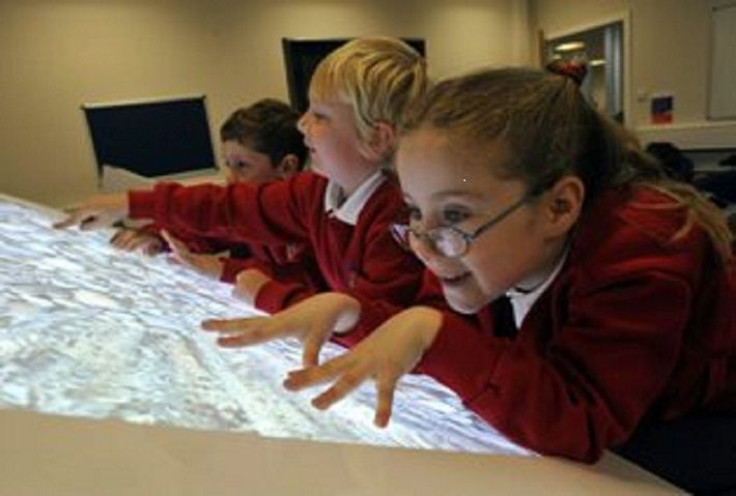'Star Trek' Classrooms Help Children With Math

Researchers from Durham University say that multi-touch, multi-user desks can help improve children's math skills.
A study that involved 400 boys and girls between ages 8 and 10 found that children who used the so-called 'Star Trek' classroom improved in both flexibility and fluency in solving problems that required analytical thinking.
"Our aim was to encourage far higher levels of active student engagement, where knowledge is obtained by sharing, problem-solving and creating, rather than by passive listening. This classroom enables both active engagement and equal access," said Professor Liz Burd, School of Education, lead author of the study.
"We found our tables encouraged students to collaborate more effectively. We were delighted to observe groups of students enhancing others' understanding of mathematical concepts. Such collaboration just did not happen when students used paper-based approaches," Burd said.
The desks and the software that recognized multiple users were designed by a team of researchers from the Durham University.
The project called SynergyNet set out to integrate a system of desks that collaborate with each other. The system also connects the furniture and fabric of the classroom while the desks are the main components with their "multi touch" surface.
Researchers found that children who worked math problems on these desks improved in both mathematical flexibility and fluency, while children doing traditional paper-based activities only improved in flexibility. Also, 45% of students who used the tool NumberNet increased in the number of unique mathematical expressions they created, compared to 16% of students who learned through the traditional paper-based activities.
Researchers say that the desks can be used as both keyboard and screen. The desks allow children to be actively involved in learning rather than just listening.
"Cooperative learning works very well in the new classroom because the pupils interact and learn in a different way. The children really enjoy doing maths in this way and are always disappointed when you turn the desks off," said Emma Mercier, School of Education. "We can achieve fluency in maths through practice, however, boosting a pupil's ability to find a range of solutions to arithmetic questions is harder to teach. This classroom can help teachers to use collaborative learning to improve their pupils' flexibility in maths."
The desks don't replace teachers. Researchers say that the desks help teachers assign class-work to either groups of students or to individuals. Teachers can even send one group's answers to another group or evaluate students' performance.
"Technology like this has enormous potential for teaching as it can help the teacher to manage and to orchestrate the learning of individuals and groups of learners to ensure they are both challenged and supported so that they can learn effectively," said Professor Steve Higgins.
The cost of setting up such a classroom and keep it running is still very high for it to be used in regular schools. However, in just three years of the project, researchers have seen advancements in technology and reduction of prices.



























